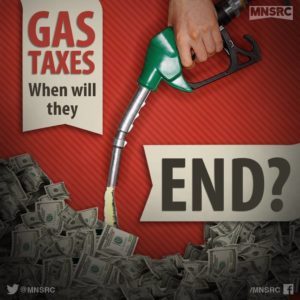 Transportation infrastructure often tops the list of the most important functions of government, especially roads and bridges. Without a well-maintained network of roads, families will inevitably spend more time in the car and less time with their families. Inadequate transportation infrastructure also means Minnesotans pay more for everyday household products transported by trucks, and generally have fewer options for where they can live and work.
Transportation infrastructure often tops the list of the most important functions of government, especially roads and bridges. Without a well-maintained network of roads, families will inevitably spend more time in the car and less time with their families. Inadequate transportation infrastructure also means Minnesotans pay more for everyday household products transported by trucks, and generally have fewer options for where they can live and work.
A recent study by TomTom, the GPS company, found the average commuter in the Minneapolis metro area experiences 21 minutes of traffic delays for every hour spent in the car. A worker with a 30 minute commute ends up spending 59 hours per year sitting in traffic! The same goes for moms and dads driving kids to and from school and extra-curricular activities during peak commuting hours. Rural Minnesotans are also feeling the pain with much of Minnesota’s trunk highways classified in “poor” condition.
With state government under one-party Democrat control for the past two years, roads across the state have taken a backseat as state government spends millions on train projects benefiting only a few in the metro area. Even when Governor Dayton hiked taxes on all Minnesotans, the extra money was spent on controversial initiatives like pay raises for politicians, political payback to union allies, and a fancy $90 million office building for part-time legislators. Meanwhile, roads and bridges went underfunded. In a recent interview Gov. Dayton refused to rule out an increase to the gax tax next year, despite its unpopularity with the public.


Dayton wouldn’t specify whether he would support a gas tax hike, a sales tax dedicated to transportation or other alternatives. He said, however, that he wants the public and the Legislature to consider the options before the 2015 legislative session.

Senate Republicans have been working to prioritize adequate transportation funding for years, and have introduced several bills that would benefit Minnesotans across the state. These are a few examples of ideas that work, proposed by Republicans to solve what has become Minnesotans’ biggest daily headache, so you can get home to your family faster and safer:
-
Senator John Pederson’s bill SF 742 would establish a public private partnership (P3) program, which was one recommendation of the recent Transportation Blueprint developed by the Minnesota think tank Center of the American Experiment. According to the Federal Transit Administration, projects using this model were operational one to six years earlier than planned, and realized millions of dollars of cost savings. MnDOT has already identified projects that could be candidates for this program, but the legislature has not made it a priority.
-
Senator Dave Osmek’s bill SF 2869 would divert Motor Vehicle Lease Tax Revenue from the general fund to the County State Aid Highway Fund, prioritizing transportation-related tax revenues on roads and bridges. The bill also increases the portion of the Motor Vehicle Sales Tax dedicated to the “opt-out” bus rapid transit companies, focusing spending on flexible transit options.
-
Senator Dave Brown’s bill SF 2970 would provide an appropriation of 50% of bond proceeds toward road and bridge repair and reconstruction, which creates an incentive for the legislature to prioritize roads at least as much as non-transportation projects.
